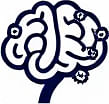A/B Testing as a Mental Model for Smarter Choices
 by Verner Mayer
by Verner Mayer
A/B Testing offers a simple framework for comparing options to make informed decisions. This approach, rooted in psychology and business, helps refine strategies through evidence-based comparisons, leading to better outcomes in various fields.
A/B Testing serves as an essential mental model for evaluating choices in a structured way. By comparing two alternatives, individuals can gather data to inform their decisions. This method draws from principles in psychology, where human behavior often responds differently to slight variations.
In practice, A/B Testing involves presenting two versions—let's call them Version A and Version B—to different groups. The goal is to measure which one yields superior results based on predefined metrics. For instance, in business settings, this could mean testing two website layouts to see which generates more engagement.
One key aspect of A/B Testing is its reliance on real-world data. Rather than relying on assumptions, it uses actual user interactions to reveal patterns. This aligns with cognitive development, as it encourages a shift from gut feelings to evidence-backed conclusions.
To apply this mental model effectively, start by defining clear objectives. What specific outcome are you aiming to improve? Once set, divide your audience or scenarios into two equal parts. Expose one group to Version A and the other to Version B, then collect data over a set period.
In psychology, decision making benefits greatly from this approach. Studies show that people often fall into biases, such as favoring the status quo. A/B Testing counters this by providing objective feedback, helping to refine personal or professional strategies.
Consider a professional scenario in marketing. Suppose a company wants to boost email open rates. They could create two subject lines: one straightforward and another more descriptive. By sending each to half the subscriber list, they can analyze which performs better. This not only improves campaigns but also builds a habit of iterative improvement.
Beyond business, A/B Testing can enhance everyday life. For example, if you're a lifelong learner trying different study techniques, test two methods over a few weeks. Track your retention rates to determine the more effective one. This fosters a mindset of continuous refinement.
Benefits of Using A/B Testing
There are several advantages to adopting this mental model. First, it reduces risk by testing on a small scale before full implementation. This is particularly useful in fast-paced environments where mistakes can be costly.
Second, it promotes a culture of learning. Each test provides insights that can be applied to future decisions, contributing to personal growth. Over time, this builds confidence in one's ability to make choices based on evidence rather than intuition alone.
Steps to Implement A/B Testing
- Identify the variable to test, such as a headline or a product feature.
- Create the two versions, ensuring they differ only in that one aspect.
- Select a representative sample for each version to maintain fairness.
- Run the test for an adequate duration to gather reliable data.
- Analyze the results using simple statistical tools to determine the winner.
- Apply the findings and iterate as needed.
While straightforward, A/B Testing requires attention to details like sample size and external factors that might skew results. For accurate outcomes, ensure the groups are similar in composition.
In cognitive development, this mental model supports the idea that repeated experimentation leads to better problem-solving skills. It encourages individuals to question assumptions and seek validation through action.
Professionals in various fields have seen success with this approach. In product design, for example, testing user interfaces can lead to more intuitive experiences. By systematically comparing options, designers create products that better meet user needs.
Ultimately, incorporating A/B Testing into your toolkit means embracing a proactive stance on decision making. It's about turning uncertainty into actionable knowledge, allowing for smarter, more effective choices in both personal and professional contexts.
Potential Challenges and Solutions
Like any method, A/B Testing has its hurdles. One common issue is inconclusive results due to insufficient data. To address this, extend the testing period or increase the sample size.
Another challenge is over-reliance on quantitative data, which might overlook qualitative aspects. Balance this by combining A/B Testing with feedback methods, ensuring a holistic view.
By addressing these, you can maximize the value of this mental model, making it a cornerstone for ongoing improvement.
In summary, A/B Testing equips individuals with a practical framework for better decisions. Whether in psychology, business, or daily life, it offers a way to refine approaches through evidence, fostering growth and efficiency.
